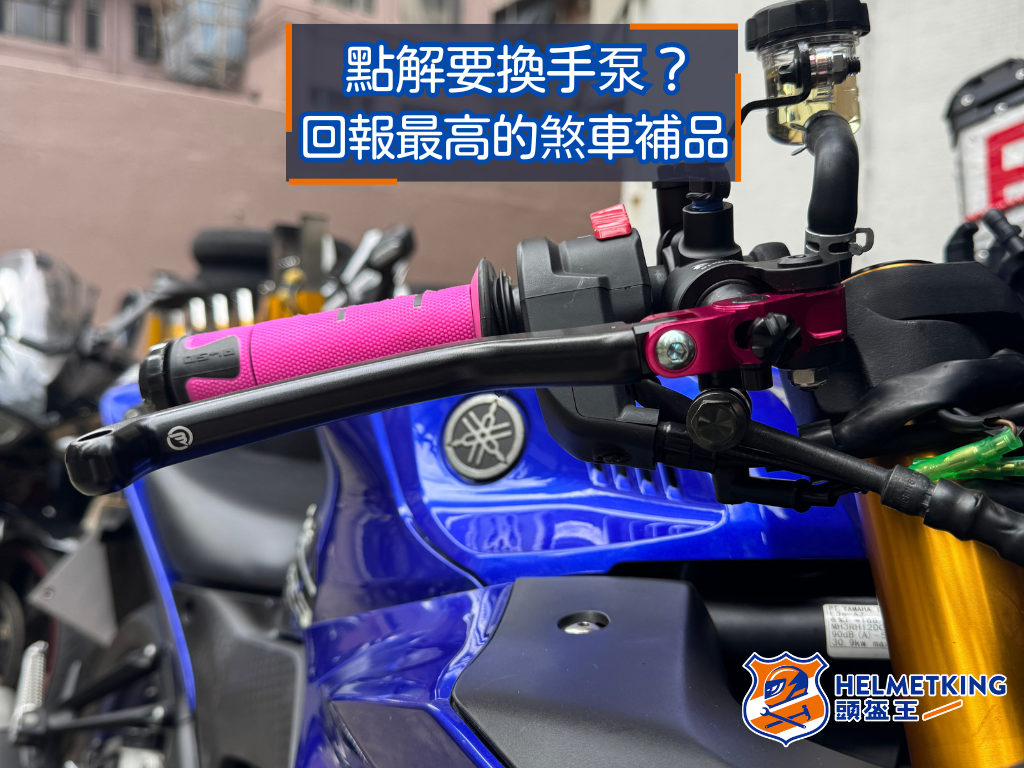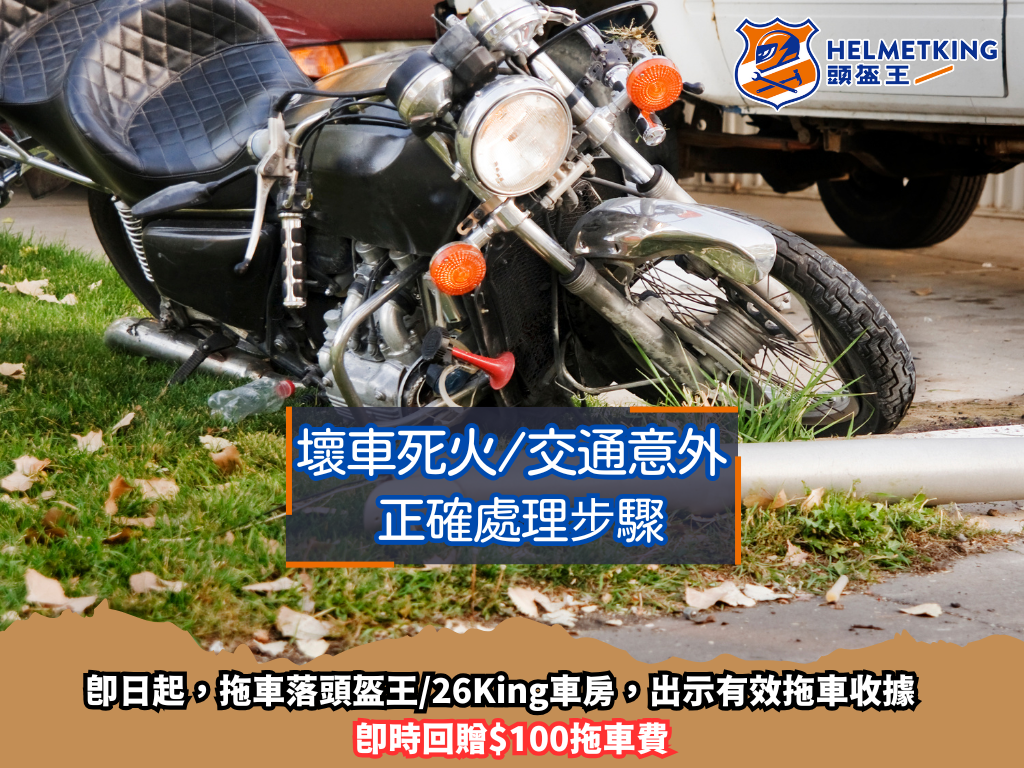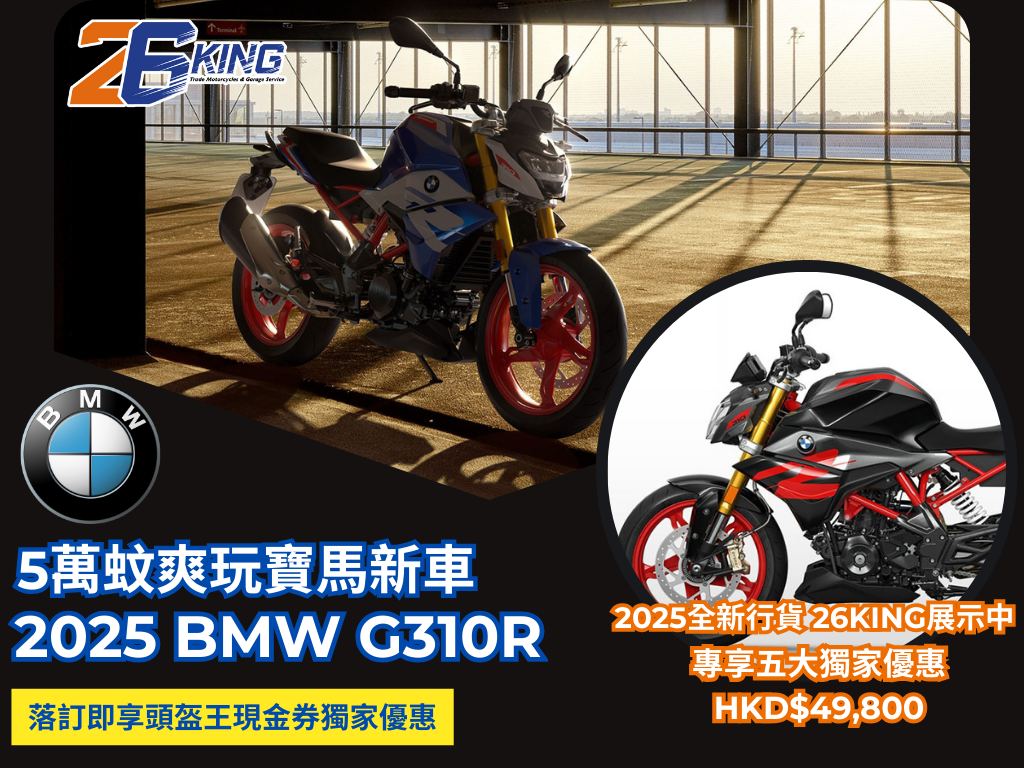
[Modification DIY] Why Upgrade Motorcycle Brake Master Cylinder?
on 2025-12-14
2023-01-29
The Helmet has become synonymous with safety over the years. It is common to have road accidents and injuries while riding a two-wheeler. Now, a question often arises, do the motorcycle helmets have expiry dates?
Motorcycle helmets don’t come with specific expiry dates. The vehicles have the manufacturing date stickers, as the DOT FMVSS-218 Standard demands. You can use the manufacturing date stickers found under the control liners as the benchmarks to understand when to change your helmet.
You need to replace your motorcycle helmet immediately after a crash, but this should not be the only reason why you will change your helmet. There are several other crucial factors to consider to changing your helmet.
One can take bike rides for various reasons, whether it is a training ride for a competition, trying to better the conveyance, or having a ride to enjoy fresh air on the outskirts of the city area. No matter the reason for your bike riding, you must put on your helmet always throughout your ride.
In case your helmet is kept in your store room or the garage for a long time, you need to think about whether you should use the helmet or replace it as there comes a genuine concern about if the helmet is as healthy and protective as it was at the time of purchase a few years back. The article will discuss the issue and discuss motorcycle helmet expiry date.
How to Check Motorcycle Helmet Expiry Date?
Helmet wearing has a 70% lower risk of severe head or brain damage in bike or bicycle crashes. Helmets are not unbreakable, but the head shields can absorb the powerful energy emitted through a collision, saving the brain and skull from fatal injuries. According to the experts, you must replace your old bike helmet immediately after the previous one experiences a crash.
Another research project shows a helmet might look fine even after experiencing a crash. The outer plastic layer of the helmet might bounce back to the normal position. Still, the interior foam gets damaged beyond imagination, and one cannot detect the issue from the outside.
Rich Handel, a test project leader at Consumer Reports, says, “Once the foam the compressed, you reduce the safety margin you have”, and unfortunately, “That’s not going to protect you.”
Besides crashes, most bike helmet manufacturers advise buyers to replace the helmets every three to five years, based on the status and performance. There is no fixed standard or regulation for how frequently you should replace your helmet. Consumers sometimes opt for bike helmet repair rather than buying new ones, which is a comparatively better option than taking no initiative. Sometimes, good repair works can elongate the bike helmet expiry limit for a few more months.
Heat, sweat, and other factors affect the foam's density and make it lose its impact over time. The core element which is supposed to safeguard you can cause the expiration. When one faces an accident and drops the helmet accidentally, the EPS liner absorbs the power, and it begins to decay. Even when you lose grip of your helmet from a height of three to four feet and it hits the floor, grass, dirt, or the pavement, you must look for a new helmet. Apart from the EPS liners, chin straps and comfort liners are the other factors you need to replace your helmet occasionally.
The expiration dates vary from manufacturer to manufacturer, but the average span ranges between three to six years.
Helmet Safety Checks
The bikers need to check their helmets every month to see that the EPS liner is in its place and rightly attached to the outer shell. You must look at whether the retention straps are not coming loose or the stitching is becoming undone.
Examine the outer shell to check for cracks and chips. If you find any damage, you must replace your helmet shortly, as one tiny crack can become a weak spot and might result in accidents causing critical head injuries. Therefore, it is better to be safe than repentance.
You must treat your helmet as your life support. It is not advisable to store the helmet in the garage or shed for a long time. Make sure to keep the helmet in your place on a shelf, where it is not cold and damp. Don't leave your car right-side up as cats might pee on it, or birds can make it dirty. Neither should you keep it by the window in the sun or inside a hot car.
The modern helmet models are costly, so the bike rider must take good care of the helmet. It is preferable to wash the helmet shell at monthly intervals with shampoo and warm water and clean it with a soft cloth. Mostly, the helmets' inner pads and comfort liners are washable and removable. If yours is, you must remove and wash the elements twice a year to retain the safety factor. You can replace the comfort liner at the interval of a year to give it a fresh look and feel. It will be beneficial for both the biker and the passers-by individuals.
How to Detect Helmet Degradation?
photo-oxidative degradation not only affects the helmet, but you can also see that the colour of your helmet starts to fade. If your helmet is made of polycarbonate, the PC will turn to grow yellowish.
How fast a helmet can degrade depends on factors, such as how often and at what time of the day you wear the helmet and how you take care of the helmet when not in use.
How Often Should You Replace Your Motorcycle Helmet?
Experts always advise you to change your helmet if it experiences an accident and hits something hard. Even if the helmet might look fine from the outside, there might be non-visible fractures to the exterior. So, when next time anything similar happens, the EPS won't be able to absorb the impact.
There is no specific time limit. When your helmet is five years old, is it need to be replaced? In most cases, the answer is yes! But, it does not need to be necessary, yes, in every case. There are exceptions too!
Your motorcycle needs a complete inspection inside out. It will help if you remain critical and sharp-eyed regarding details. If the condition seems fine, the inner foam and comfort liners are still in good condition; you can use them for a few more days, but make sure you won't head for a long-distance journey.
In today's era, one of the most common reasons to replace your helmet is to upgrade to the latest technology, maintaining safety standards and comfort. In addition, visible damages and bad fit are the two primary reasons to change your motorcycle helmet.
Safety Helmet Expiry Date
Since childhood, we have been conditioned and trained to check the expiry date printed on medicines, bread, milk, and other edible items. We all know that these food items can even rot before the expiry date if not handled with care.
Did you know safety helmets have expiry dates too?
Like food items, the lifespan of these items becomes short if not taken care of rightly. Novices often wish to know about the safety bike helmet expiry dates, though there is no one-word answer.
Almost all the manufacturers have strict recommendations on helmet and suspension lifespans. The safety helmets need to be replaced at a minimum of 5 years, whereas the suspensions need to be replaced after one year. In both cases, the time frame is the maximum limit for replacement, and the calculation begins at the moment of first use.
The safety helmets must be replaced every two years, based on the environment, usage, and application. The visible signs like cracks, damage, holes, dents, etc., are the core reasons to replace the safety helmets. Sometimes, signs like score or scuffs on the surface might indicate that the time has come for retirement. If a helmet has been penetrated or crashed, you can immediately contact mechanics to remove the piece from the service.
Dents damage the safety helmet material, resulting in weak spots that are unacceptable in the workplace. Scores and scuffs on the surface affect the helmet by decaying the outer shell.
If the suspension straps are ripped apart for any reason, or it starts showing faulty stitches, consider removing the webbing shortly and replacing the section with a new suspension assembly. Constantly keep an eye on the plastic attachment clips to ensure they are neither broken nor weakened.
During the suspension replacement or any other attachment, you must leverage the parts manufactured by the companies regarding models and size. Safety helmets are checked and certified with the manufacturer's suspension, under the supervision of skilled experts.
Damaged parts and accessories produced from other sources do not receive approval to be fitted to the safety helmets. Moreover, an incorrect web and headband can lessen or eliminate the positive impact, and the protection level might fall short.
Another visible sign is fading. It is primarily noticed in plastic cells and fibre glasses that sunlight or ultraviolet rays damage the shell from within. Consequently, the helmet becomes brittle with a chalky surface and steady discolouration.
Too much flexibility in the helmet can be a sign of weakness too!
Strong chemical and other critical factors can break the shell material from within, resulting in fragility. Solid and harsh chemicals can negatively impact the suspension, resulting in fading and discolouration of the shell.
Regarding the MSA helmet expiry dates, the recommendation is the same. The MSA hard shells must not be used for more than five years, and You must replace the suspensions after 12 months. The manufacturing date is stamped or moulded on the hard hat shell, which the rider must know for the basic idea.
Bicycle Helmet Expiry Date
In the first place, it is a conflicting concept why cyclists need helmets. Similarly, like motorcycle safety, cycling safety is one of the most vital issues one must understand. Most people don't realize the importance of using bicycle helmets.
Like the motorcycle helmets, the bicycle helmets protect the head by lessening the power that can affect the brain or skull fatally. The helmets act as energy absorbers if the cyclists meet an accident. The polystyrene liner absorbs the primary yet most potent shock but cannot provide further protection. Novice cycles are very likely to fall on the ground, and researchers have shown that their helmets have provided them with helpful protection. The manufacturer determines the helmet safety features based on international standards.
Surprisingly, the bicycle helmets last more than the motorcycle helmets. According to the Consumer Product Safety Commission, the Government Testing Body of USA, cyclers should replace their helmets every five to ten years. The simple piece of equipment ensures the rider's safety like nothing. According to a report published by the Insurance Institute for Highway Safety, around 70% of people who died in cycle accidents were not wearing helmets. As the cycle helmets do not have expiry dates, the cyclers must check their helmets at specific intervals to ensure their replacement.
Why Is It Important to Discuss Helmet expiry Dates?
The riders might seek a more stylish helmet with more features than the existing model s/he uses presently. Ventilation and similar upgraded technologies can also be why you decided to replace your older helmet model with the latest one.
According to Swart, a rider must not replace a well-cared helmet only due to safety issues. The Engineering Firm MEA Forensic ran research on hundreds of helmets where they found helmets that did not degrade after a long time of purchase, up to 26 years. Therefore, again the question comes of whether helmets expire.
Based on the most critical factors, it entirely depends on the rider whether s/he wants to change the helmet. If you have a relevant reason to change your helmet, you might, or if you wish to use your current model for a little more time and the helmet is in a satisfactory state in every aspect, it will offer you enough protection.
To Conclude,
As discussed in the article, there is no approved time limit or expiry date for motorcycle and bicycle helmets. The replacement depends on the various factors in the case of different models. If you have a bike or cycle, you must remain very careful and keep a check on your existing helmets. You must opt for a new helmet if you notice the slightest damage to the equipment.

on 2025-12-14

on 2025-12-11

on 2025-12-07

on 2025-12-04
